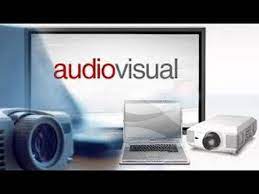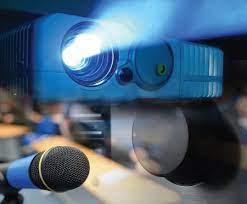COURTESY : www.musicalmum.com
Audio and visual
The first audio-visual device that became accessible to the public was the phonograph in 1877, which used audio-frequency modulations inscribed onto a disc. In 1888, Emile Berliner developed a device he named a Gramophone that recorded audio on a spiral groove running from the periphery to near the center of a flat disk.
Thomas Edison and William Dickson’s invention of motion pictures in 1895 revolutionized audio-visual entertainment, as well as helped popularize audio recording technology.
The first audio-visual media ever produced on a large scale was film. Since audio-visual media was used mostly for entertainment, in the beginning, audio and visual media was mostly produced by movie theater owners.
Since audio and visual media started being produced outside the entertainment industry, one question has constantly come up: who owns audio and visual media? Should audio-visual media be protected under copyright laws (like texts, drawings, music, etc.) or should audio and visual media be free to use without any restrictions at all?
This question has never been answered. The audio-visual media industry is still very young compared to other forms of media, so it’s hard for us to see what will happen in the future. After audio-visual technology becomes more and more advanced, audio and visual media might become just as important as written text and drawn images.
Types of Audio-visual Media
Before the 20th century, audio-visual media was not widely available to the public because audio recording devices were bulky and audio broadcasts were difficult to create.

Filmstrips, microforms, slides, opaque projector, tape recording, and flashcards are some of the many audiovisual media. Each has an audio recording embedded in visual material which is generally used for educational purposes. Audio recordings are important because they let you listen to audio while having the visual media present at the same time.
Filmstrips
Filmstrips and audio recordings with audio were the original audio-visual media. The first audio-visual recording was made in 1878 through a device called the phonoscope, which could playback audio recordings from optical discs synchronized with a separate viewing station.
In 1895, phonograph cylinders combined audio and visual information on a spinning disc. In 1938, the BBC used telecine to broadcast the coronation of King George VI over television. This is considered one of the first audio-visual media broadcasts ever.
Filmstrips were often used in schools especially before video became popular, as they offered audio recordings with images projected at high speed on filmstrip projectors. The audio would be played through speakers, and the user could then control the audio-visual media by turning the pages.
Microfilms
Microfilms are audio-visual media or audio-visual recordings. They are usually found in the form of audio recorded on a film strip or videotape, but can also be audio from radio broadcasts. There is no written text, only audio and visual information for the viewer to experience the story being told.
Microfilms came out in the 1920s. The audio-visual media is mainly audio and visual, but it is also media that helps spread information for instance with audio (radio) or visual (television). Radio was used notably in World War II to counter propaganda by the Nazis. Television entered people’s living rooms with color TV sets around 1960.
People used audio-visual media to show audio and visual things such as audio-visual media (like audio and visual themselves). Nowadays, audio-visual media can be accessed just about anywhere.
Slides
Slides were introduced in 1956. They were originally made of acetate and had to be changed after each presentation. The first audio-visual media was slides, but today there are many different audio-visual media.
Nowadays, this can be controlled by computers. These audio-visual media include PowerPoint, Prezi, animation with audio narration, podcasts, and Adobe Flash.
PowerPoint is an audio-visual presentation tool sold by Microsoft. It became popular when it was made available on the internet in the mid-1990s.
PowerPoint is important in audio-visual media because it is used often by businesses and schools to create presentations. It allows users to add text, audio, and video into presentations.
This audio-visual media tool makes it easy for anyone to produce audio-visual media.
Opaque Projector
Projected opaque materials were used as audio-visual media since the early 20th century. It has evolved over the years and is widely used in the audio-visual media industry.
The opaque projector is used to show audio-visual media for various purposes, including presentations, advertisements, movies, television shows, and information. The audio-visual media are projected on a surface using the optical properties of the opaque projector.
Tape Recording
Tape recording, CDs, DVDs, and Blu-ray discs are audio-visual media that preserve audio and visual information in a way that can be reproduced later. Audio-visual media is a type of media that captures audio and video information in one device.
Tape recorders were audio-visual media devices that were used to record audio information, compress audio information into a smaller space, compress audio information into multiple audio tracks, and edit audio information.
This medium was the traditional way of recording audio until it was replaced by digital audio tape (DAT), CDs, MP3s, DVDs, Blu-ray discs, Floppy disks, and cassette tapes.
Flashcards
Flashcards have been around for over 100 years. They are successfully used every day by students all across the world to learn a language. The reason audio-visual media works so well is that it’s efficient and engages more than one of your senses at once, rather than just one sense.
Flashcards work by presenting a written or picture-word and then the audio clip will repeat that word. This makes it easier for students to learn how to read words, not just recognize them.
The Difference Between Audio and Visual.
Audio is a term for technology that is used to record or reproduce audio signals that are then converted into sound. It is an audio medium that uses sound vibrations in the air to transmit its audio-encoded signals. Whereas Visual media was designed to show images to viewers. Such as newspapers, books, movies, television shows.
Audio and visuals were fused together in media long ago, and audio-visual media is a big part of the majority of our modern lives. You rarely see one form without the other.
Why Audio-visual media is important.
Audio-visual communication is a form of communication that produces results. Sound and lighting equipment enhance communication by making the audience more aware of their sight and hearing. Audiences who engage with events using more of their senses recall them for a longer time.
Audio-visual communication now plays a large part in human interactions, with audio-visual media now a common source of information and entertainment. It’s important because audio-visual media has the power to influence human emotions, and that its audio-visual aspect can help increase message or product recall.
Audio-visual Media Today

We live in a world where audio-visual media is everywhere. Media professionals are always on the lookout for audio-visual media to use in their productions. Audio is recognized as effective when it comes to engaging audiences, but the audio has its limitations too, that’s why It’s always used with visual components as well.
Visuals are helpful because they are more visceral and give us a better idea of what’s happening in real life. This makes them effective tools for storytelling. Audio-visual media today is so much more than just audio and visuals. It has evolved to tell a complete story that engages the audience with audio, visuals, graphics, live streaming, etc.
The audio-visual media industry will continue to evolve with the ever-changing technology and software. The audio-visual media industry is worth billions of dollars, and the market is constantly growing.
Today, audio-visual media is one of the most important methods of communication and entertainment. It is present in almost everyone’s life, whether it be through audio media like radio, visual media like television, or audio-visual media like movies. Even before the advent of audio-visual media, people have always enjoyed stories through songs, ballads, and plays.
Audio-visual media is a vast topic and covers a huge area in terms of entertainment, education, information, and propaganda. It has a deep impact on the audience when audio-visual media is used for good purposes, but when audio-visual media is used for bad purposes with unethical audio or visuals that are completely opposite to the audio, it can have a negative impact on the people who are exposed to it.
Audio-visual media is changing day by day with the coming of new audio equipment and audio-visual instruments, which has also changed the audio-visual media in terms of music, television, and radio.
Conclusion
The audio-visual media industry is an important part of humans today, and it continues to grow in this modern world. It has evolved so much in the past few years with new audio equipment coming out every day that changes audio-visual media entirely.
As audio equipment and audio-visual instruments change, audio-visual media will continue to evolve with them. And it will never stop being important because it engages an audience more than audio or visuals do individually by bringing in both forms of communication together.
Forms of audio-visual media are everywhere throughout our lives, whether it be audio media like radio, visual media like television or audio-visual media like movies. Even before the advent of audio-visual media, people have always enjoyed stories through songs, ballads, and plays.
Audio-visual media is audio and visual information that can be found in audio recordings on film strips or videotape but can also be audio from radio broadcasts. These audio-visual media include PowerPoint, Prezi, animation with audio narration, podcasts, and Adobe Flash.
If audio-visual media is audio and visual information that is used in audio recordings on film strips or videotape, then audio-visual media includes movies, television shows, audio recordings, and audio-only radio broadcasts.





